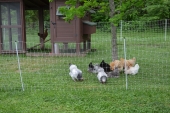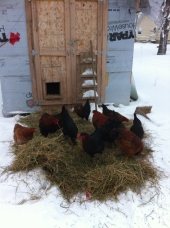








My books, movies, videos, podcasts, events ... the big collection of paul wheaton stuff!
 1
1
















[img]http://i109.photobucket.com/albums/n52/havlik1/permie%20pics2/permiepotrait3pdd.jpg[/img]
"One cannot help an involuntary process. The point is not to disturb it. - Dr. Michel Odent








My books, movies, videos, podcasts, events ... the big collection of paul wheaton stuff!










[img]http://i109.photobucket.com/albums/n52/havlik1/permie%20pics2/permiepotrait3pdd.jpg[/img]
"One cannot help an involuntary process. The point is not to disturb it. - Dr. Michel Odent








Susan Monroe wrote:
Leah, what dog breeds do you have that you can get away with using an invisible fence?
Sue
My books, movies, videos, podcasts, events ... the big collection of paul wheaton stuff!








[img]http://i109.photobucket.com/albums/n52/havlik1/permie%20pics2/permiepotrait3pdd.jpg[/img]
"One cannot help an involuntary process. The point is not to disturb it. - Dr. Michel Odent














 They must not be crowded or overheated for even one day.
They must not be crowded or overheated for even one day.Idle dreamer












My books, movies, videos, podcasts, events ... the big collection of paul wheaton stuff!








My books, movies, videos, podcasts, events ... the big collection of paul wheaton stuff!








We are in upstate New York and raise Red Stars and White Leghorns. We built the chicken houses ourselves and put them on skids so we can move them around often. We produce about 21 dozen a week, well more than what we need. It sure makes our friends and other family members happy. In regards to insulation, we use reflective insulation very successfully and have no problems with the animals. We do not require heat in the winter other than maybe a heat lamp in severe conditions. The summer months the buildings stay cooler. I buy 100' rolls from this company. Product doesn't cost much and have used it elsewhere wrapping my pumps for wells and inside my horse stables.ediblecities Hatfield wrote:Everything is said, but never insulate your chicken coop with the white insulation stuff (you might have the idea to reuse fruit or other packaging). Because they like eating it and I guess it is not very healthy for the birds.













|
And inside of my fortune cookie was this tiny ad:
Switching from electric heat to a rocket mass heater reduces your carbon footprint as much as parking 7 cars
http://woodheat.net
|



